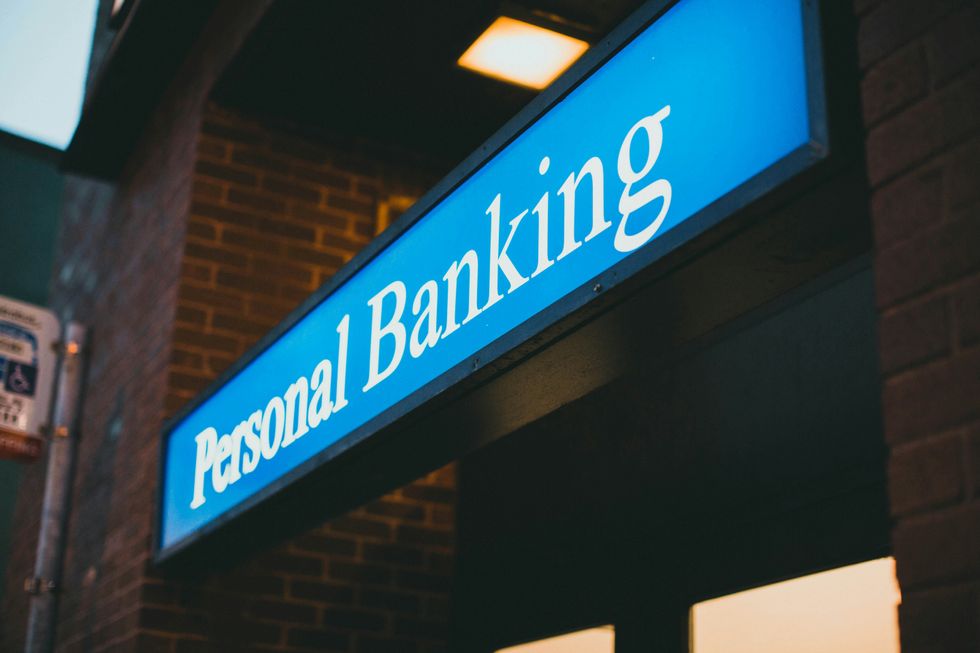The digital age has made remote fund transfers, deposits and bill paying easy. If you’re like most people, you view online banks as the future of banking. However, even though they seem more convenient, they do have drawbacks. Here’s how they compare to traditional banks and ways to determine the best option for you.
How Do Online and Traditional Banks Differ?
Digitalization took the banking sector by storm, changing how people manage their money. According to one survey, 90% of Gen Z and millennials — those aged 18-44, to be exact — recently used their phone to access their bank account. In the past, that figure was unthinkable.
Online banks are one of the latest digitalization developments in the banking sector. Unlike their counterparts, they’re mostly or entirely online — meaning they have few to no in-person locations.
Traditional banks have at least one branch — a brick-and-mortar building they operate out of — and don’t rely on digital services alone. Instead of only using your phone or computer to manage your account, you can also visit them physically.
The Pros and Cons of Online Banks
While online banks are convenient for tech-savvy young adults, they also have drawbacks.
1. Pro: 24/7 Customer Service
Since online banks hire people worldwide and operate digitally, they often offer round-the-clock customer service. Unlike traditional institutions, you don’t have to wait in a parking lot or take time off work to visit during regular business hours.
2. Pro: Heightened Security Standards
Banks operating fully online have more resources to dedicate to cybersecurity. Many encrypt your financial data, use verification measures and send notifications about suspicious activity to keep your account secure.
3. Pro: Better Interest Rates
The annual percentage yield (APY) — the amount of interest you earn in one year — offered by online banks is unparalleled. They’re usually at least 10 times higher than the national average. For instance, SoFi has a 4.60% APY on its savings account, while Bank of America offers only 0.01%-0.04% APY.
4. Pro: Remote Account Access
Online institutions let you check your account, view your balance and move money with a few taps on your phone — no more waiting in long lines for a bank teller. Since everything is remote, you can immediately transfer funds or make deposits from anywhere in the world.
5. Pro: Little to No Fees
Online banks have fewer overhead costs because they don’t need to maintain multiple brick-and-mortar locations. As a result, they usually charge fewer — and less expensive — fees.
6. Con: Accounts Are Hackable
A good rule of thumb is that if something is digital, it can be hacked. Online banks are more vulnerable to cyberattacks than their traditional counterparts — meaning hackers could steal your personal or financial details.
7. Con: No Cash Deposits
Although some online banks let you deposit cash via an ATM, most don’t offer the option. Usually, all their services are more limited. Since they have no brick-and-mortar branches, you must settle for stuffing your dollar bills in your wallet or under your mattress.
The Pros and Cons of Traditional Banks
Although traditional banks are a societal staple, they might be losing their competitive edge.
1. Pro: Mobile Services
Many traditional banks realized they needed to modernize, so they now have mobile apps, direct deposit and digital wallets. Even though their online counterparts have more offerings than them, their combination of in-person and virtual services is unparalleled.
2. Pro: In-Person Interactions
You might not realize how valuable brick-and-mortar locations are. When you physically visit your bank, you make meaningful connections and build trust. You also gain access to in-person services like safety deposit boxes and financial advisers.
Face-to-face interactions are also important. If you’re like most people, you don’t find robots and chatbots very helpful. In fact, 82% of people who’ve used chatbots for banking say they wouldn’t use them again. About 46% prefer using bank tellers in brick-and-mortar branches.
3. Pro: Widespread ATM Access
Even though traditional banks sometimes charge out-of-network fees for ATM use, you at least have the option to deposit and withdraw cash. Those machines can be a lifesaver if you’re traveling or going out with your friends.
4. Pro: Robust Security
A traditional institution keeps your money safe behind cameras, guards and impenetrable vault doors. Unlike online banks, your money and personal details can’t be leaked or stolen because of a bug in a line of code.
5. Con: Lack of Convenience
Why would you waste time waiting in line for a bank teller? Most brick-and-mortar businesses have limited operating hours, so branches are usually crowded — it’s inconvenient compared to digital interactions.
6. Con: Unnecessary Fees
As most young adults can confirm, traditional banks like handing out fees — and it’s never fun to get hit with an unexpected overdraft fee when you’re just trying to order food delivery. Many also charge for account maintenance and balance minimums.
The Importance of Financial Education
Deciding between digital and brick-and-mortar banking options can be challenging if you’re not a financial expert. While the pros and cons may make the choice seem clear-cut, the reality of banking is more complex.
If you’re like most young adults, you probably have little to no idea about what you’re doing when it comes to banking. Only 38% of Gen Zers are financially literate — fewer than any other generation.
Properly managing your bank account, transferring funds, investing and making deposits on your own can be challenging. Financial education is vital to get the most value out of your money. It also helps you decide between online and traditional banks because you can better determine which is more beneficial to you and your situation.
Which Type of Banking Is Better for Young Adults?
Would you be better off with online or traditional banking? Only you can make that decision. Consider getting educated on finances and reviewing your unique financial situation to see which would benefit you more.









































